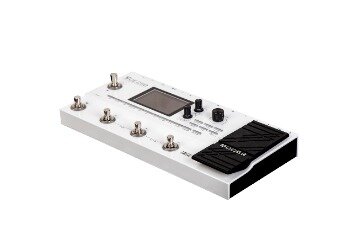What Is Process Costing? What It Is & Why Its Important
Contents:

Differences Process Costing Job Costing Unit cost information comes from the departmental production cost report. Inventory Accounts Similarities Inventory accounts include raw materials inventory, work-in-process inventory, and finished goods inventory. Differences Process Costing Job Costing Several different work-in-process inventory accounts are used—one for each department . One work-in-process inventory account is used—job cost sheets track costs assigned to each job.
Again, this scenario is a rare one for there is no much coincidence where by the normal loss computed at the beginning of production process will ever automatically equal the actual loss. The details on the terms used and the accounting treatment of normal loss and other concepts are found in our article on “process costing account for a single product with normal loss”. Sometimes process costing for a single product is dominated by a situation whereby the normal loss equals the actual loss incurred at the end of the production process.
Initial materials are the starting materials that are inserted in process one. They are the materials which take the biggest percentage of the product being created or produced. Initial materials are always introduced in level one of the processes and are said to be 100% complete when it comes to the level of completion as far as work in progress is concerned. Cost per unit in every stage or process entails summation of the total cost for that particular process level and divided with the total production.
While making drumsticks may sound simple, an immense amount of technology is involved. Rock City Percussion makes 8,000 hickory sticks per day, four days each week. The sticks made of maple and birch are manufactured on the fifth day of the week. It is difficult to tell the first drumstick made on Monday from the 32,000th one made on Thursday, so a computer matches the sticks in pairs based on the tone produced. Monitoring and reviewing the process costing system is essential to ensuring it is effective and relevant.
Join PRO or PRO Plus and Get Lifetime Access to Our Premium Materials
Process costing is an allocation system companies use to allocate cost for homogeneous items produced by a company, explains Accounting Coach. Homogeneous products represent items that are very similar or indistinguishable from each other. Lumber, soda pop and chemical products are a few examples of homogeneous products. Consider the importance of process costing alongside its advantages and limitations. Case 1 – Process costing with zero beginning and zero ending work-in-process inventory of SG-40. (That is, all units are started and fully completed within the accounting period.) This case presents the most basic concepts of process costing and illustrates the feature of averaging of costs.
The company then aggregates these reports to analyze total product cost. Typically, the cost per unit for each process will be calculated separately for direct materials and conversion costs. Each step is an important part of the process and helps to ensure that an accurate cost per unit of output is calculated.

Using the weighted average method, equivalent units for Department 1 for January are 2,640 [(2,000 × 100%) + (800 × 80%)]. The beginning units and those started and completed are not separately identified in the calculation of equivalent units. Process costing is used most often when manufacturing a product in batches. Each department or production process or batch process tracks its direct material and direct labor costs as well as the number of units in production. The actual cost to produce each unit through a process costing system varies, but the average result is an adequate determination of the cost for each manufactured unit.
However, each unit is assumed to use an identical amount of conversion costs for a given operation, as in process costing. We now extend our Pacific Electronics example to the testing department. As the assembly process is completed, the assembly department of Pacific Electronics immediately transfers SG-40 units to the testing department. Conversion costs are added evenly during the testing department’s process.
Pros and Cons of Process Costing
The healthcare industry uses process costing to calculate the cost of medical treatments and procedures. This industry uses a similar process to manufacturing, where resources are transformed into a finished product, in this case, medical services. Process costing suits manufacturers that produce homogeneous products, such as chemicals, food products, and textiles. In these situations, the production process is consistent, and the cost of production per unit is relatively stable.
A Small Business Guide to Cost Accounting – The Motley Fool
A Small Business Guide to Cost Accounting.
Posted: Fri, 05 Aug 2022 07:00:00 GMT [source]
Cost is determined by the process and by the number of products produced. At the end of the month, $2,000 of materials remained in raw materials inventory. The details on the terms used and the accounting treatment of WIP and other concepts are found in our article on “process accounts for a single product-with work in progress ”. Click the corresponding sub-title above to access the details. Standardized process is what dominates the process costing. The finished material of one process constitutes the raw material of the next.
Connect With a Financial Advisor
The total number of units produced during a given period is calculated. By dividing the total cost of a process by the total number of units produced, the cost per unit can be obtained. A process costing system accumulates the costs of a production process and assigns them to the products that the business outputs.
The production manager is told to push his employees to get as far as possible with production, thereby increasing the percentage of completion for ending WIP inventory. However, since the production process takes three weeks to complete, all the units produced in the last half of March will be in WIP inventory at the end of March. Because Wrigley produces identical units of product in batches employing a consistent process, it likely uses a process costing system. With such a system, Wrigley would need a separate work-in-process inventory account to track costs for each stage of the production process.
In this example, two groups—administrative and manufacturing—report directly to the chief financial officer . Each group has a vice president responsible for several departments. The organizational chart also shows the departments that report to the production department, illustrating the production arrangement. The material storage unit stores the types of wood used , the tips , and packaging materials. By using process costing, XYZ Ltd can accurately determine the cost of production per unit for Widget A. The company can use this information to make pricing decisions, manage inventory, and assess profitability.
Manufacturing Overhead
With NetSuite, you go live in a predictable timeframe — smart, stepped implementations begin with sales and span the entire customer lifecycle, so there’s continuity from sales to services to support. Brainyard delivers data-driven insights and expert advice to help businesses discover, interpret and act on emerging opportunities and trends. The production may result in joint products or by-products. The finished products are identical & cannot be easily distinguished unless batch coding is done. Industries such as cement, soaps, steel, paper, chemicals, medicines, vegetable oils, rubber, etc., use this method to assign the costs. The company draws up a floor plan and measures how many square feet each department uses.

Employees play a crucial role in the success of the process costing system. Manufacturing companies should provide training and support to employees to ensure they understand the system and how to use it effectively. Effective communication is critical to the success of process costing implementation. Companies must ensure all stakeholders understand the process and the importance of accurate cost calculations.
What is process costing?
In this case, there are no cases of co-products or by-products. Before you examine the flow of costs through a process costing system, check your understanding of the appropriate circumstances to apply process costing. Processing a single product for a scheduled time, followed by successive runs of other products. In addition to setting the sales price, managers need to know the cost of their products in order to determine the value of inventory, plan production, determine labor needs, and make long- and short-term plans. They also need to know the costs to determine when a new product should be added or an old product removed from production.
How Much Does Sewer Line Replacement Cost? – Bob Vila
How Much Does Sewer Line Replacement Cost?.
Posted: Fri, 27 Jan 2023 08:00:00 GMT [source]
Halfway through the month of March, the chief executive officer and chief financial officer asked the controller to estimate the production results for the month of March in the form of a production cost report . Prepare a production cost report for a processing department. Figure 4.5 “Summary of Costs to Be Accounted for in Desk Products’ Assembly Department” shows that costs totaling $386,000 must be assigned to completed units transferred out and units in ending WIP inventory. Later in step 3, we will use equivalent unit information for the Assembly department to calculate the cost per equivalent unit. Partially completed units converted to the equivalent completed units; calculated by multiplying the number of physical units on hand by the percentage of completion of the physical units.
Costing Multiple Products
The next step is to calculate cost per unit for both direct materials and conversion costs for each stage of the process. As discussed earlier, direct materials are materials consumed during manufacture and conversion costs are direct labor costs and manufacturing overhead costs. Management accountants must calculate equivalent units in the process costing system. Equivalent units represent the amount of unfinished goods left in a process at the end of an accounting period.
- Raw materials move through the production cycle in a continuous flow, ending with the production of identical packages of paper.
- It is beneficial for the businesses where mass production is done through a similar process.
- Process costing does not use direct allocation to apply business costs to individual goods.
- Process costing is an allocation system companies use to allocate cost for homogeneous items produced by a company, explains Accounting Coach.
- The Coca-Cola Company is one of the world’s largest producers of nonalcoholic beverages.
As a result, leftover how to calculate sales tax at books is valued at the most recent price paid for the most recent stock of inventory. As a result, the inventory asset on the balance sheet is recorded at the most recent cost. This method assigns the expense of first inputs to the processes in the order of production. However, it does not precisely identify which a lot of raw material is taken for production and its procurement rate.
This creates a difficult process for managing inventory and determining how many products the company has to sell in the open marketplace. One of the challenges of process costing is how to deal with incomplete units that are still in the production process at the end of the accounting period. These units have not received all the costs that they will eventually incur, and therefore cannot be valued at the same cost per unit as the completed units. To deal with this issue, process costing uses the concept of equivalent units, which adjusts the number of units to reflect the degree of completion for each cost component. This way, the costs can be allocated more accurately and consistently to the units that have received them.
Production is continuous and the final product or end product is the result of a sequence of processes or operations. The cost of normal spoilage, wastage, etc. is included in product cost. Process-wise records are maintained, including those relating to the quantity of production, scrap, wastage, etc. All expenses—direct and indirect—are accumulated and classified according to the process. Homogeneous products with identical and standardized features ensure quality. The end product is the result of a sequence of processes.
Nutrafol Hair Growth Ads Trigger TINA.org Complaint To Federal … – HBW Insight
Nutrafol Hair Growth Ads Trigger TINA.org Complaint To Federal ….
Posted: Tue, 18 Apr 2023 01:41:12 GMT [source]
For instance, if the company operates in a highly regulated industry with strict cost accounting requirements, a more precise method, such as the actual cost method, may be necessary. On the other hand, if the industry is less regulated and has more flexibility, a simpler method like the standard cost method may suffice. Overhead costs can vary significantly from one production run to another, and this variability can impact the selection of a process costing method. If the variability in overhead costs is low, a method like the standard cost method may be adequate.
A company adds up all the costs for the current period and divides the total by the number of units completed and transferred out, as well as the equivalent number of units still pending at the end of the period. It can be used when there are minor fluctuations in the cost from one period to another. This process encompasses all activities involved in producing goods or services for sale, including planning, organizing, scheduling, executing, controlling, monitoring, evaluating, and closing. In contrast with job costing, which measures costs based on individual jobs, process costing measures costs based on each unit of output produced. To calculate cost per equivalent unit by taking the total costs and divide by the total equivalent units.